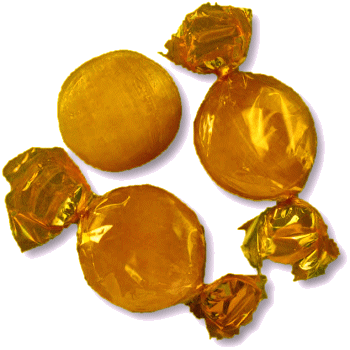




WELCOME TO An Entertainment Site for Scottish Country Dancers - Enjoy the curated selection of theme-related dances for celebrations and holidays, or find a dance associated with a special calendar day, or EVEN your own birthday!
Twelfth-night, David Teniers the Younger, 1634
Twelfth Night
Jan 5
Other Scottish Country Dances for this Day
Today's Musings, History & Folklore
"Come, strike up, tabor and harp, strike up, fiddle and rebeck — dance and be merry today, and let care come tomorrow. Bear and wolf, look to your prisoner — prance, hobby — hiss, dragon, and halloo, boys — we grow older every moment we stand idle, and life is too short to be spent in playing mumchance.”
~ The Abbot, Sir Walter Scott, 1820
No worries! The days of the Scottish Reformation are behind us, and now we can once again dance, revel, and misbehave on Twelfth Night! This lively jig may seem straightforward, but a few twists will test your wits and coordination. Picture this: a double triangle followed by a turn that lands you right back where you started, and the final two eight-bar phrases that split a pas de basque in half—immediately followed by a circle. These quirky, non-standard steps are perfectly suited for holiday revelry!
Twelfth Night was the crowning jewel of year-end celebrations in the British Isles and France, with origins reaching back to the fifth century. The festivities began when French and English churches introduced the Feast of Fools, a boisterous tradition featuring temporary “Bishops” and “Archbishops of Fools” who staged playful mischief and reveled with abandon. By the 15th century, the French government banned these raucous antics from church settings due to their increasingly bawdy nature. Yet the spirit of the revelry thrived, evolving into vibrant street festivals. A seasonal “king” was elected to preside over the merrymaking: the Prince des Sots in France, the Lord of Misrule in England, and in Scotland, regional variations included:
The Abbot of Unreason (most areas)
The Abbot of Bon Accord (Aberdeen)
The Abbot of Narent (Edinburgh)
The Abbot of Unrest (Inverness)
These figures took up their “thrones” on Halloween, inaugurating three months of jubilant revelry that crescendoed during Christmastide, especially on Twelfth Night, and often carried on until May Day! So, dancers, keep up your stamina! As Walter Scott so aptly reminds us: "We grow older every moment we stand idle, and life is too short to be spent in playing mumchance." 🎄 👑 🕺 💃
The Abbot of Unreason
The tradition of the Abbots of Unreason and their revelries in Scotland lasted from the late medieval period into the mid-16th century. The exact origins are difficult to pinpoint, as similar traditions of "misrule" and festive mock authority were widespread in medieval Europe. In Scotland, records of the Abbots of Unreason are particularly prominent in the 15th and early 16th centuries.
Timeline and Decline:
Medieval Origins (Pre-15th Century)The roots of the Abbots of Unreason likely lie in older, pagan-inspired seasonal festivities, combined with medieval church customs that allowed for moments of comic subversion during feast days.
Similar traditions, such as the Boy Bishops and Feast of Fools, were common in medieval Europe, suggesting a shared cultural backdrop.
Height of Popularity (15th–Early 16th Century)
The tradition flourished in Scotland during this time, particularly in urban centers and during major holidays like Christmas, Shrovetide, and May Day.
The Abbots of Unreason organized large public festivities that blended satire, revelry, and carnivalesque humor. These events were often tolerated or even encouraged by local communities.
Challenges and Suppression (Mid-16th Century)
The Scottish Reformation (beginning around 1550) marked a turning point. Led by figures like John Knox, the Protestant reformers condemned such revelry as immoral, frivolous, and incompatible with stricter religious values.
In 1555, the Scottish Parliament officially banned the Abbots of Unreason, along with other traditional festivities perceived as irreverent or disruptive. This was part of a broader effort to curb popular festivals with pagan or satirical overtones.
Lingering Traditions (Late 16th Century)
Despite the ban, remnants of the tradition persisted informally, particularly in rural areas, where old customs were slower to fade. However, by the end of the 16th century, the formal role of the Abbots of Unreason had largely disappeared in Scotland.
The suppression of the Abbots of Unreason was part of a larger trend across Europe during the Reformation and Counter-Reformation, where Protestant and Catholic authorities sought to regulate popular festivities and impose stricter moral codes.
In Scotland, the rise of Calvinist values and the increasing influence of the Kirk (Church of Scotland) played a central role in ending such traditions.
While the Abbots of Unreason formally disappeared, echoes of their spirit survived in folk traditions, seasonal festivals, and theatrical performances, highlighting the resilience of communal revelry even in the face of religious reform.
For more on the revelry during this period, click the drawing of Traditional Christmas merry-making in the banqueting hall at Haddon Hall, Derbyshire from: Joseph Nash, The Mansions of England in the Olden Time, Series I, (London, 1839).
And for the dance, see below for the Berlin Hopalots, 2016.
Click the dance cribs or description below to link to a printable version of the dance!






